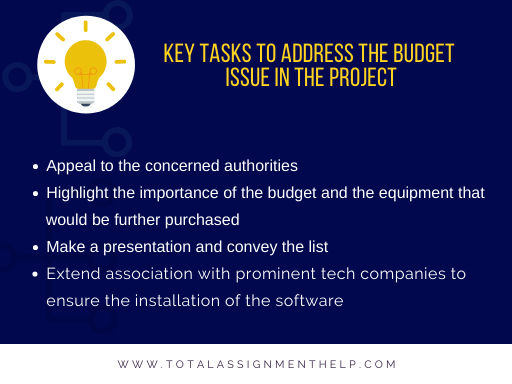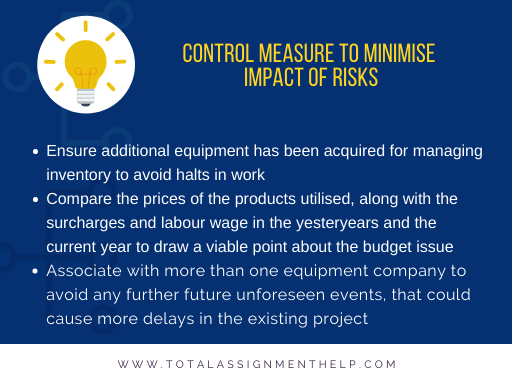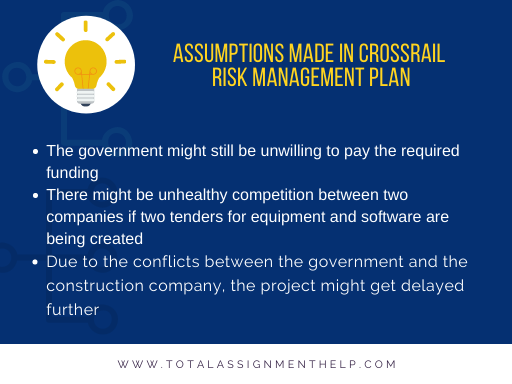Critical Evaluation Of Crossrail Risk Management Plan
Question
Task: You have been consulted as an expert with respect to the Emergency, Risk and Safety Management practice to prepare CrossRail Risk Management Plan in not more than 2000 words.
Answer
Executive summary
CrossRail risk management plan is formulated in the proposed study which is executed by the manager for the purpose of Emergency, Risk and Safety Management. As management of Cross Rail Limited carry out their assessment programs through the audit proposition, the performance progress within Elizabeth Line Rail Way Construction Project is necessary to emerge with improvement in budget, schedules and resources. This requires the identification of appropriate risk possibilities, and the quantification and qualification the risks. Appropriate strategic management possibilities needs to be mapped with respect to situation-based hazards to understand the impacts and vulnerabilities while preparing CrossRail risk management plan. Within the estimation of losses the resources inventory comparison shall be evaluated as adequate. With effective communication management involvement from all parties are to integrate for monitoring and stating the assumptions.
Introduction
For putting the most complicated yet promising and ambitious project of Europe back on track a realistic and robust plan needs to be detailed. This CrossRail risk management plan undertakes identification of prime areas of risk possibilities in relation with a detailed project background. When all perspectives are scrutinised in terms of financial, political or other relevant aspects in present, past or up-coming context the areas shall get revealed effectually (Arsuaga et al. 2018). With the help of the risk register the domains of vulnerability posed in the Elizabeth line of service accessibility shall be determined. The qualitative and quantitative intensiveness associated with each risk area shall get analyzed. The risk matrix allows the loss estimation and prioritization of 3 highest risk points in the completion of this project. Vulnerability impact assessment helps outline 3 major risk domains around which casualty, economy and structural damage effects shall be evaluated. The contingency plan along with risk monitoring help devise control measures to come up with assumptions in mitigating the risk areas. This enables in recommending and inferring the best solution for this project success.
Provide background of project
The attempts to bring Elizabeth line back for passengers to avail services the Cross Rail Limited feel the necessity to conduct CrossRail risk management plan evaluation. The areas of Risk, Safety and Emergency are addressed through the present CrossRail risk management plan program, where the qualitative and quantitative impacts befalling upon the service appropriateness get identified. For making the dream project of Elizabeth line to become functional a new leadership team outline is put to action under the charge of Cross rail Limited (Kyriakidis et al. 2018). It is adhering to excessive complexity involved in the remaining work of Elizabeth final line opening that Crossrail Limited creates a six-month window before delivering to central section of services. A midpoint opening of the service is stimulated for the end of 2020, within which CrossRail risk management plan program is believed to accomplish its mitigation process. Elizabeth line is proposed to open through central section between Abbey Wood and Paddington. This is believed to serve effective as a link towards West End, City of London. There are ideas to run 12 trains in every hour that initially begin from Canary Wharf to Southeast London especially during the peaks.
What are the main risks associated with project while preparing CrossRail risk management plan from all perspectives like, political financial?
For Elizabeth line to open and become fully functional from central station, the Bond Street station needs to remain open and ready. Significant challenge is faced for smooth trial run of the rail due as Bond Street is yet not open and functional. This is restricting the testing and examination procedure. Any further delay in progress of rail designing and station opening shall prohibit Crossrail from making Elizabeth project to become servable from end of 2020 (Gren?ík et al. 2018). Although Crossrail Ltd seems offering relentless services in close association with Costain Skanska as a joint venture, the extensive complexity infrastructure is holding the progress speed back.
As central section of work is much necessary to implement adequate delivery of rail services they require a huge funding potential for backing the entire project. It is often becoming difficult to integrate the authorities like Mayor, the Local Government and the Transportation authorization to agree with the funding package (Jab?o?ski, 2017). As the funding package last agreed upon was stipulated since 2018 the raised prices of service amenities by the 2020 is likely to stand out of budget for incorporating 200 CCTVs, 50 km communicable cabling, 200 radio antennas, 750 loudspeakers and 66 information displays. This is one major limitation faced in financial front for this project.
Risk Register for CrossRail risk management plan
|
SL No. |
Risk Identified |
Likelihood of risk occurrence |
Impact if risk occurs |
Severity |
Mitigation |
|
1. |
Budget estimate discrepancy between 2018 agreement and 2020 project activation |
Moderate |
High |
High |
Engage higher cap of funding for preparedness to meet elevated prices |
|
2. |
Delay in progress from responsible authorities |
Moderate |
High |
High |
Project progress report aligning with date of service delivery and integrate in plan meeting of all officials |
|
3. |
Incomplete installation of equipments for testing the rail progress |
High |
High |
High |
Quick technological solutions with greater expert involvement in meeting the deadline |
|
4. |
Government initiatives lacking |
Moderate |
High |
Moderate |
Progress reports from governing body |
|
5. |
Technological discrepancies |
High |
High |
High |
Bring to order |
|
6. |
Service integration among multiple department functions lacking |
Moderate |
High |
High |
Better collaboration and coordination with friendly association |
|
7. |
Critical time deadlines |
High |
High |
High |
Follow short-term time targets |
|
8. |
Closed operation in intermediary stations |
Moderate |
Low |
High |
Opening as soon as completion |
|
9. |
Deficiency in interdepartmental communication transparency |
Moderate |
Moderate |
High |
Create common work centres and reporting points |
|
10. |
Low professionalism from expert engineers |
High |
High |
High |
Create performance appraisal programs |
Risk Matrix:
|
Likelihood of the risks |
|||||
|
Rare |
Unlikely |
Probable |
Likely |
Almost Certain |
|
|
Catastrophic |
6 Moderate |
7 |
5 |
3 |
1 |
|
Major |
4 Moderate |
8 High |
2 High |
4 Extreme |
7 Extreme |
|
Moderate |
1 Low |
6 Moderate |
9 High |
10 High |
4 Extreme |
|
Minor |
3 Low |
5 Low |
10 Moderate |
6 Moderate |
9 High |
|
Negligible |
2 Low |
4 Low |
7 Moderate |
8 Moderate |
10 Moderate |
|
IMPACT |
|||
|
PROBABILITY |
Low |
Medium |
High |
|
High |
10, 7, 5, 3 |
||
|
Medium |
8 |
9 |
1, 2,4, 6 |
|
Low |
Vulnerability Impact Assessment:
1st: Immensely complex project proposition engaged in the process of making Elizabeth line functional and be back on track with greater efficiency is a major challenge. Incorporation of all desired technological up-gradation and installation of software to be expected to complete within the 6 months’ wing time is making the efficacy level of service vulnerable (Pascher et al. 2017).
2nd: Government authorities posing restriction upon the funding budget makes compromised service mechanism as a major vulnerable point. The major, Transportation and local Governing authorities do not merge on the same funding proposition. The agreed 2018 fund packaging shall not stand same in 2020, which raises uncertainty with adequate equipment installation within short time deadline (Peng et al. 2016).
3rd: In order to make Elizabeth line to run completely in smooth manner across central station, the Bond Street needs to remain open (Bloomfield et al. 2016). The stipulated date for testing and operation is end of 2020. With Bond Street remaining closed till date increases the opportunity of success thus making the project vulnerable.
Loss Estimation
Crossrail Ltd tests that if the Elizabeth line opens without lack of installation of software technologies and deficiency of funding budget it shall come across assumed losses:
1.Casualty
|
Reasons |
No. of losses |
Injury |
|
Lack of software installation |
1,800 |
1,500 |
|
Deficiency of funding budget |
1,200 |
500 |
2.Structural Damage
|
Reasons |
Loss estimate |
Injury |
|
Improper testing of trial run |
$26,500 |
2,500 |
|
Delay in progress |
$19,000 |
700 |
3. Economy
|
Reasons |
Loss estimate |
Injury |
|
Lack of funding package agreeability |
$50,000 |
12,000 |
|
Ineffective political fund raising initiatives |
$24,000 |
400 |
Inventory Analysis: Resources used for the chosen risk
As mentioned by Crawford et al., (2018), inventory analysis mainly refers to the examination of the resources that are required to be kept on hand of an organization. A complete and thorough analysis of the inventory available would permit in tackling the risks before the commencement of services in 2021. Among all of the risks that had been identified previously, the one with an extreme amount of impact is Budget incompatibility. It is important that all of the authorities manage to come to a common ground. The mayor, governing body and the transportation authorities have differentiated opinions on the situation of the budget that is being assigned and expected. The key resources are required to tackle this risk outlined in the CrossRail risk management plan. Essentially, it is important to convey the tasks that would be completed with the help of the budget adhered and they are:
- Tunnel Systems
- Train Signalling
- Station Systems
The availability of the current inventory for the project includes 50 help points, 200 radio antennas, and 3 signaling systems. The budget outlined in the CrossRail risk management plan would ensure that all of the amenities have been availed accordingly. Further, to tackle the budget issues, it is important to do the following and ensure the inclusion of the following resources:

- Appeal to the concerned authorities
- Highlight the importance of the budget and the equipment that would be further purchased
- Make a presentation and convey the list
- Extend association with prominent tech companies to ensure the installation of the software
In this scenario, their ideas and plans can be considered as the biggest resource for the successful completion of the project.
Contingency Plan
The contingency plan is of primal importance while conducting a CrossRail risk management plan. In the words of Akinradewo et al., (2019), the use of a contingency plan is of primal importance because it allows an organization to devise a plan for an unforeseen event in the future. For the successful completion of the project, it is important that all of the risks have been addressed depending on their priority and impact of the completion. If the Elizabeth Line is to be completed by 2021 and trial running and operations are to be carried effectively then the following aspects are of primal importance:
- 4-24 trains have been tested every hour
- 8000kms are being covered on a daily basis
- The inclusion of 2000 passengers, 100 employees and 24 trains per hour limitation maintenance
- Train evacuations based on at least 80 situations are required to be carried out effectively
However, to execute the aforementioned plans, eradication of the risks is necessary. To address, the budget issue it is important to frame the changes in prices that have occurred from 2018-2020 and present to the government body. Secondly, for the arrangement of software applications, the inclusion of legal tenders and invitation to some of the prominent companies existing in the UK is of primal importance. The installation of the equipment can only be carried out by some of the advanced technology companies to suit the needs of the people. Thirdly, the delays in government approval can be gained during the discussion about the entire budget issue and it is important to be made sure that the entire measure has been undertaken within a minimum time range.
Discuss Control Measures
The following control measures are instigated to avoid the vulnerability of all of the three risks identified in the CrossRail risk management plan. It is important that the use of control measures allows in minimising the extent of the problems arising and reduces the impact to the point where the project can see the time of completion and is finished within schedule (Conforti et al., 2016).

- The first control measure is to make sure that additional equipment has been acquired for managing the inventory so that until approval has not been gained by the government for the next requirement, the work can be continued
- The second control measure would be entirely to present an entire comparison of the prices of the products utilised, along with the surcharges and the labour wage in the yesteryears and the current year to draw a viable point about the budget issue
- The third control measure would be to have an association with more than one equipment company to avoid any further future unforeseen events, that could cause more delays in the existing project
The fundamental idea here in this study of CrossRail risk management plan is to make sure that the company has been able to gain the subsequent range of resources that are required to ensure the completion of the project and to assure its commencement from the year of 2021.
Risk Monitoring
The risk monitoring is an essential component for a project while initiating CrossRail risk management plan because it ensures that all of the plans and strategies that have been harboured in the risk assessment has been properly implemented (Nath et al., 2018). The use of software applications would make the monitoring process and update of final information much easier, thus, the use of MS Project would be beneficial to keep track of the entire process.
State Assumptions
The final assumptions on CrossRail risk management plan can be mentioned as follows:

- The government might still be unwilling to pay the required funding
- There might be unhealthy competition between two companies if two tenders for equipment and software are being created
- Due to the conflicts between the government and the construction company, the project might get delayed further
Recommendations
The following recommendations on CrossRail risk management plan can be used for future projects and other aspects of the work to make sure that the future projects have been properly handled and the current ones have been properly dealt with:
- The maintenance of a project progress report is mandatory that can be used to present to the officials consecutively
- The comparison of the equipment prices should always be proposed at the initial stage of the project with the help of forecasting
- The importance of the equipment and their alignment with all of the components of the Tunnel system should always be prioritised
Conclusion
The discussion provided above effectively presented the dynamics of CrossRail risk management plan and the possible ones that could be incurred in the project. Further, it has also been mentioned that the risks can be properly tackled with and mitigated with the help of decent control measures that would be applicable to ensure the successful commute of the line in 2021.
Reference List
Akinradewo, O., Aigbavboa, C., Oke, A. and Coffie, H., 2019, November. Appraisal of risk contingency planning for construction projects. In IOP Conference Series: Materials Science and Engineering (Vol. 640, No. 1, p. 012019). CrossRail risk management plan IOP Publishing.
Arsuaga, I., Toledo, N., Lopez, I. and Aguado, M., 2018. A framework for vulnerability detection in European train control railway communications. Security and Communication Networks, 2018.
Bloomfield, R., Bendele, M., Bishop, P., Stroud, R. and Tonks, S., 2016, June. The risk assessment of ERTMS-based railway systems from a cyber security perspective: Methodology and lessons learned. In International Conference on Reliability, Safety, and Security of Railway Systems (pp. 3-19). Springer, Cham.
Conforti, R., Fink, S., Manderscheid, J. and Röglinger, M., 2016, September. PRISM–a predictive risk monitoring approach for business processes. In International Conference on Business Process Management (pp. 383-400). Springer, Cham.
Crawford, R.H., Bontinck, P.A., Stephan, A., Wiedmann, T. and Yu, M., 2018. Hybrid life cycle inventory methods–A review. Journal of Cleaner Production, 172, pp.1273-1288.
Gren?ík, J., Poprocký, R., Galliková, J. and Volna, P., 2018. Use of risk assessment methods in maintenance for more reliable rolling stock operation. CrossRail risk management plan In MATEC Web of Conferences (Vol. 157, p. 04002). EDP Sciences.
Jab?o?ski, M., 2017. Assessment of the correctness of the application of the explicit risk estimation methods in making an independent assessment of a rail transport risk management process. Archives of Transport System Telematics, 10.
Kyriakidis, M., Majumdar, A. and Ochieng, W.Y., 2018. The human performance railway operational index—a novel approach to assess human performance for railway operations. Reliability Engineering & System Safety, 170, pp.226-243.
Nath, N.D., Chaspari, T. and Behzadan, A.H., 2018. Automated ergonomic risk monitoring using body-mounted sensors and machine learning. Advanced Engineering Informatics, 38, pp.514-526.
Pascher, K., Hainz-Renetzeder, C., Gollmann, G. and Schneeweiss, G.M., 2017. Spillage of viable seeds of oilseed rape along transportation routes: ecological risk assessment and perspectives on management efforts. CrossRail risk management plan Frontiers in Ecology and Evolution, 5, p.104.
Peng, Z., Lu, Y., Miller, A., Johnson, C. and Zhao, T., 2016. Risk assessment of railway transportation systems using timed fault trees. Quality and Reliability Engineering International, 32(1), pp.181-194.












